SOMETHING
FANTASTICAL
balletLorent
Liv Lorent MBE founded balletLorent in 1993, and the dance theatre company has been based in the North East for more than 30 years. As the company prepares for a production of Snow White, we speak to Liv, and several of the cast, about challenging perceptions of ballet and building an environment which is inclusive for dancers, and for the audience.
Interview by Arlen Pettitt
Photographs by Christopher Owens
Scotswood isn’t the most obvious location for a ballet company.
The mere existence of balletLORENT challenges any stereotypes you might have - both about ballet and about Scotswood.
Founded by choreographer Liv Lorent MBE in 1993, balletLORENT has been based in the North East for more than 30 years. After bouncing from venue to venue for much of that time, the company made the John Marley Centre its permanent home in 2022.
“I realised I absolutely loathed performing with an absolute passion. I hated it. I hated the responsibility of it. I hated the sense of being watched. I didn't get any enjoyment from it whatsoever. It wasn't just fear, it was disgust. It was horror!”
Walking in through the front door, you’re greeted by a foyer and curving corridors which betray the centre’s former life as a school, but the layout is perfect for the current tenants with a performance space, rehearsal studios, creative suites, office space, and a central communal area.
There’s even a small outdoor space, backing on to a greenhouse and chicken run used by one of the neighbours.
It’s here in the spring sunshine that Liv Lorent is setting up folding chairs.
She says the chickens remind her of home.
Home was the Belgian countryside of the 1970s, where as a child she’d fly around the house dancing to music and covered in bruises from bumping into furniture.
A local ballet school provided an outlet.
“I wasn't actually much of a country girl,” she says. “I wasn't sporty, didn't really enjoy the mud, but ballet was without animals and it was clean. It was another, beautiful, world; the sacred space of ballet.”
When the family moved to England and settled in Devon - “deepest Dartmoor” - there was nowhere local for Liv to continue her training, but the family managed to win a grant for her to go to a specialist boarding school which trained dancers.
This is common in ballet, but Liv recalls a difficult five years of intense work, and now her own daughter is a similar age she pauses to reflect on the isolation of it.
“In the 1980s, you were not allowed to phone parents - there were no mobile phones or internet anyway - you just didn't have any contact”, she recalls. “You'd go months without a hug from an adult - it was just quite a kind of lonely upbringing. But then it meant, of course, dance and fantasy were even more important.”
But it was while at the school that Lorent discovered choreography. It was a timely discovery, because she was also grappling with performance.
“I realised I absolutely loathed performing with an absolute passion,” she says. “I hated it.
I hated the responsibility of it. I hated the sense of being watched. I didn't get any enjoyment from it whatsoever. It wasn't just fear, it was disgust. It was horror!”
She explains how dancers often have to wrestle with themselves, as even if they are talented choreographers, the performance element is a huge part of their lives. This means that choreography often comes to the fore later in an artist’s career, when they are performing less.
For Lorent, she focused on it straight away, graduating from the Laban Centre for Movement and Dance in 1993 and founding balletLorent.
She also immediately had an ethos of her own.
“When you go and see a ballet, you expect to see something fantastical,” she explains. “You expect to see tragedy and ecstasy. You expect to see beauty in abundance. You expect to hear very beautiful music. You expect to see beautiful people. And I feel like I'm doing all of that in my own way.”
“Sometimes we'll use pointe shoes that you'd expect to see,” she continues. “But, sometimes we'll be using roller skates even with it, or we might use tap dancing.”
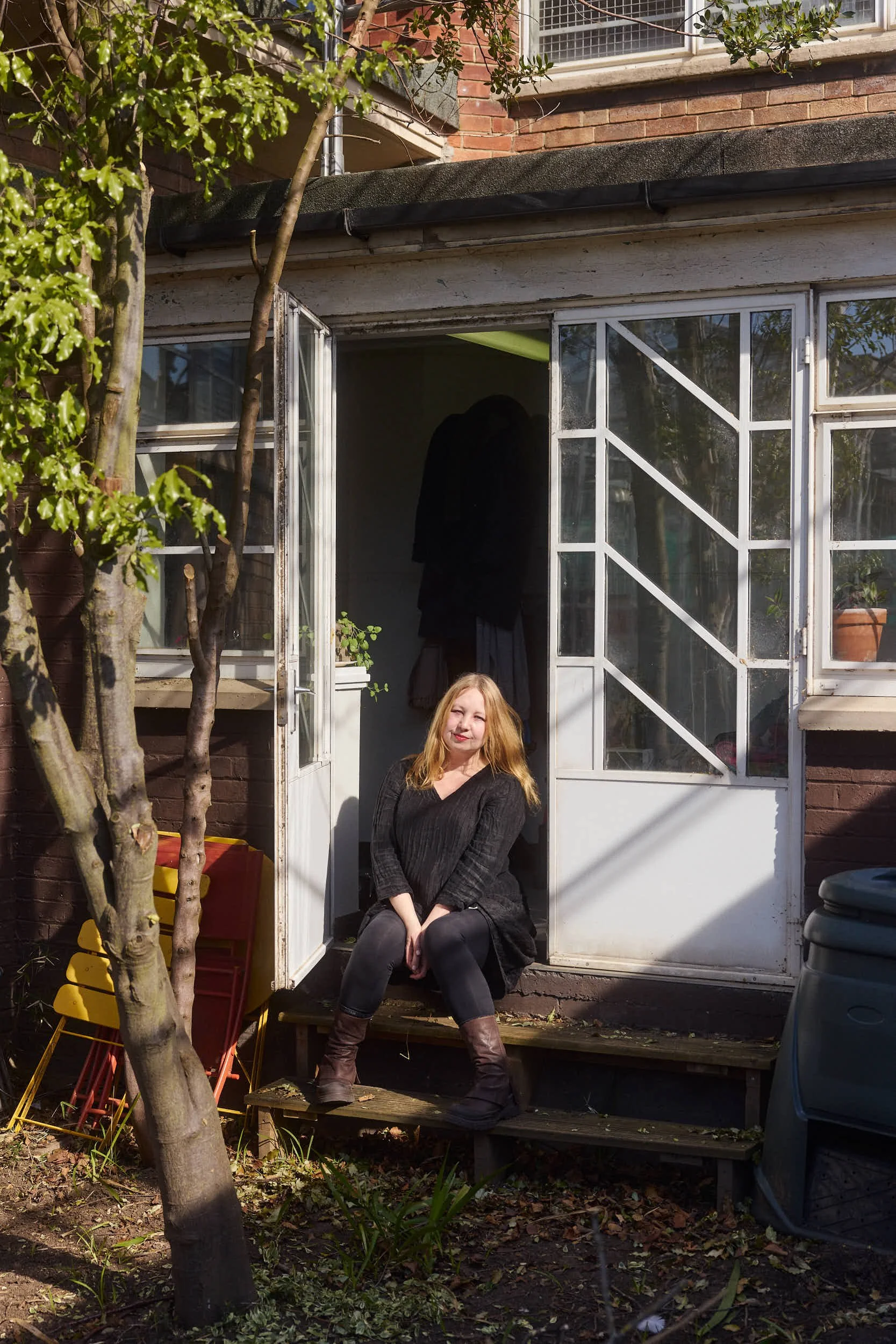

“My body shape is not what it used to be! But Liv is that person who celebrates that, and likes diversity. The company's so brilliant. I've never felt out of place or like I shouldn't be here.”
Having set out in the early 90s to make her way as a choreographer, herself in her early 20s, Lorent found an industry that wasn’t taking her seriously. She was 30 before she was able to make a living, although she puts that down to the nature of a career in the arts, rather than just her own journey.
Someone who has been with Liv since the very beginning is Geoff Hopson. Hopson was a classmate of Lorent’s at Laban, joining her on her first tours before becoming a teacher and instructor, and recently returning to performance with balletLorent.
Geoff is a warm and friendly presence, sat in the main studio which a few minutes before was filled with the pounding feet of rehearsal.
“Liv was a bit of a maverick at college,” Hopson recalls, “her type of movement, and the way she saw the world in dance, was very different to most of the other students there.”
“That specialism she has in looking at the world and seeing beauty in things that maybe other people don't see, that was there in her at a very, very early age,” he continues.
Having been out of performing for 20 years, Liv coaxed Geoff back with a role in balletLorent’s production of Snow White.
“My body shape is not what it used to be!” Hopson says. “But Liv is that person who celebrates that, and likes diversity. The company's so brilliant. I've never felt out of place or like I shouldn't be here. It’s been a really wonderful sort of new journey and a surprise, something I didn't think would ever happen.”
Liv echoes this when she describes what she looks for in her dancers.
“It's been very important that the company isn't dancers who all look the same,” she says. “They're not all from the same training. They're not all from the same country. They're not all from the same body type. They could be any age and any disability.”
“They've just got to be able to move in a really interesting way,” she continues, “and have a lot of charisma and a lot of belief in trying to work in the quite creatively radical way that we work.”
She gives an example: “Sometimes you might be dancing with a five-year-old next to you and you'll be asked to do a jump like a five-year-old!”
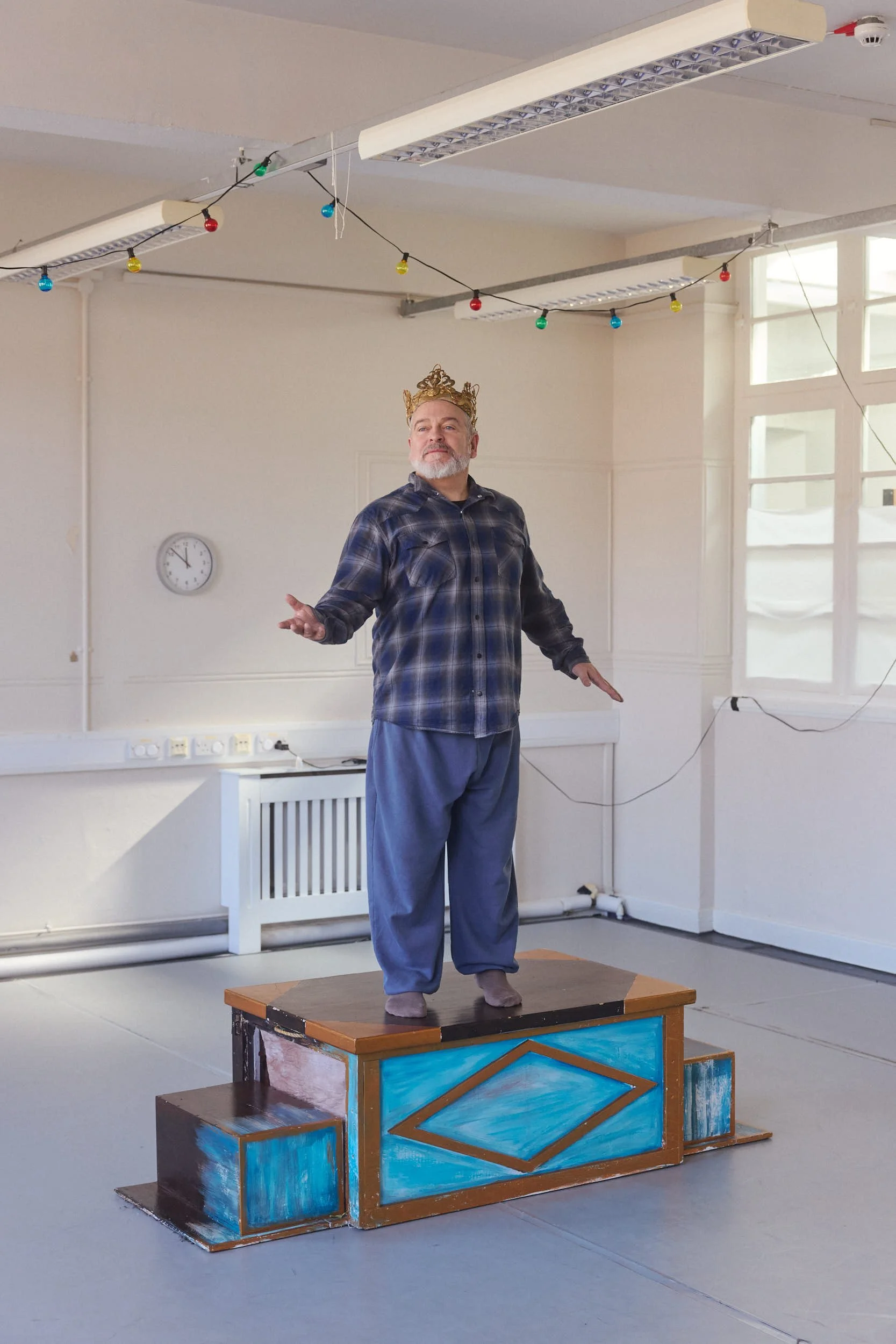
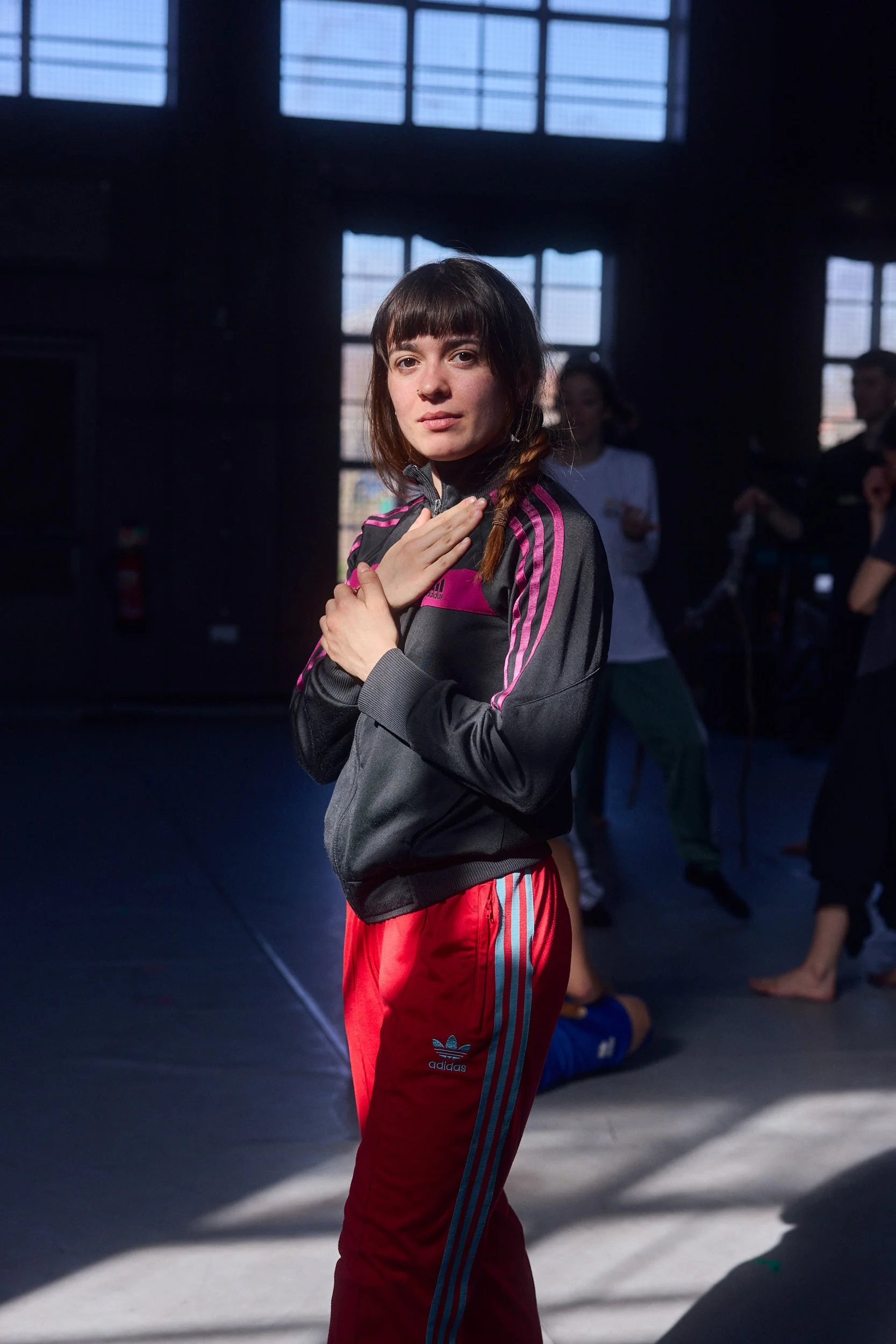
This ethos draws a certain type of character into the orbit of Liv and balletLorent, but the company’s approach can contrast with the traditional dance many performers grow up in.
“I come from France,” says Montaine Ponceau, who recently joined balletLorent in her first professional role, “so I think there is a whole different culture towards the arts.”
“I feel it’s more open-minded here,” she continues, “and especially in this company. Liv likes to work with different bodies, different age groups, and it's just so inclusive and it's so interesting to learn from everybody.”
Montaine is from the alpine town of Annecy. Having studied locally, she then trained at the Northern School of Contemporary Dance in Leeds. Students on the MA Contemporary Dance Performance course have the opportunity to do a placement as an apprentice dancer, and Ponceau’s was with balletLorent. She was then offered a place with the company for their performance of Snow White last autumn.
Montaine is clearly thrilled to have the opportunity to live her dream of being a professional dancer - she practically bounces through the corridors, and is thriving in the environment balletLorent has created.
“Liv’s not looking for one specific style, so it's a lot of what can you bring, what the other person can bring,” Ponceau explains. “We're not trying to all look the same, and that's just so interesting to know that there is a place for exploring and researching and digging into movement or character, or just physicality.”
Although Montaine has joined balletLorent at the start of her career, there’s a pattern which emerges speaking to many of the other dancers where they met or knew of Lorent early, and then re-connected when the time was right.
Toby Fitzgibbon has been working with balletLorent for more than ten years. Originally from Norwich, he trained at Bird College in Kent and now splits his time between the North East and Sweden.
He is sat in the common room-type space where everyone sits to eat lunch, and recalls that the first time he met Liv, she made two-pieces with Scottish Dance Theatre, where he was a full-time artist. There was the chance to work together more, but Fitzgibbon wasn’t ready to go freelance - the model balletLorent uses for its dancers.
“It's a big step,” Toby says of going freelance, “if you've been a full-time artist in a company.
You're very used to being protected and looked after, and so I wasn't sure about the freelance world.”
“I emailed Liv to say ‘have I burned my bridges?’,” he recalls, “and she said no.”
“We're not trying to all look the same, and that's just so interesting to know that there is a place for exploring and researching and digging into movement or character, or just physicality.”
Welsh dancer Aisha Naamani tells a similar story, having been a professional dancer since 2018 working with the National Dance Company Wales, she went freelance a year and a half ago.
“I met Liv back when I was about 20,” Aisha remembers, “ and I was auditioning for an apprenticeship. She offered me the apprenticeship but I took another job. And then, when I left that, I dropped her an email and said, ‘I'm freelancing. I wanna meet you guys again and see if you're kind of what I remember and if we could get on.’ We met for a day - they took me on for a small project and that’s how I'm here.”
In the few minutes we spend together, Aisha talks about the benefit of working on projects with other dance companies, and how her values and ethos align with balletLorent’s, especially around opening up ballet to new audiences. Those values are then carried to the other places she works, hopefully spreading around the industry.
Liv explains how balletLorent favours the freelancer model and works on a project by project basis with dancers, but often before they know it a decade has passed.
“Some choreographers get really invigorated by having a really new set of dancers for each project,” Lorent says, “and they find that really enticing. But I'm much more into long-term relationships with every single collaborator, because once you've gone through understanding the shared language together, there are a lot of shortcuts and the value of that is the more you trust, the more you can actually be brave.”
One of Liv’s longest-term collaborators is Caroline Reece. Caroline first auditioned for Liv aged 32, and joined balletLorent in 1996. Now, nearly 30 years later, she still performs with the company.
“When you know people and love them, you can get so much out of it,” Lorent explains. “I love the fact Caroline was in the role of The Queen in Snow White in 2015 and she's come back to it 10 years later, and she's still The Queen.”
“I think she's better, right?” she continues. “I don't think she's a lesser dancer in her 60s. She's a better one. That's very radical. Most people don't think that way.”
“I can't remember what I felt like 10 years ago,” Caroline says when I ask her about it later, “except I think my knee was starting to hurt and I've had a knee operation since then!”
Reece is sat in the silent rehearsal space, and gestures back towards the impressive set, pointing out where she spends most of the performance.
She praises the way the cast can work as one - “everybody else is making me look good, basically, aren't they?” - and also how Lorent’s approach to choreography champions the story being told rather than the precise nature of any particular step, allowing dancers of different sizes, shapes and ages to adapt their contribution.
“I’d never met anybody like her at all,” Caroline says, recalling the first time she met Liv. “She talked a lot. She didn't demonstrate a lot. But she was very, very articulate about her ideas and I knew immediately she was a very smart woman.”
She needed to be smart, Reece says, as well as incredibly driven to survive in the industry.
“I don't think she's a lesser dancer in her 60s. She's a better one. That's very radical. Most people don't think that way.”

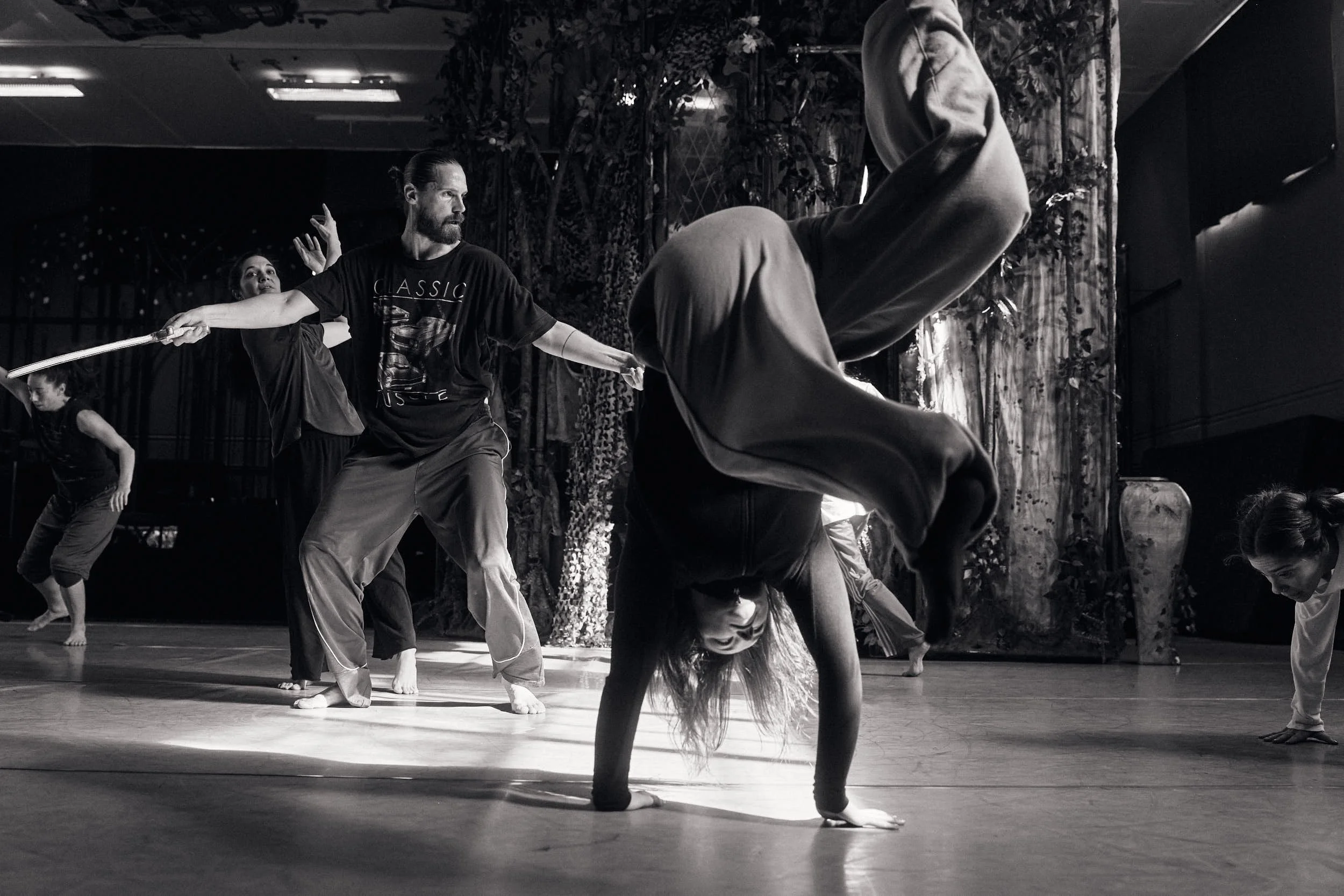
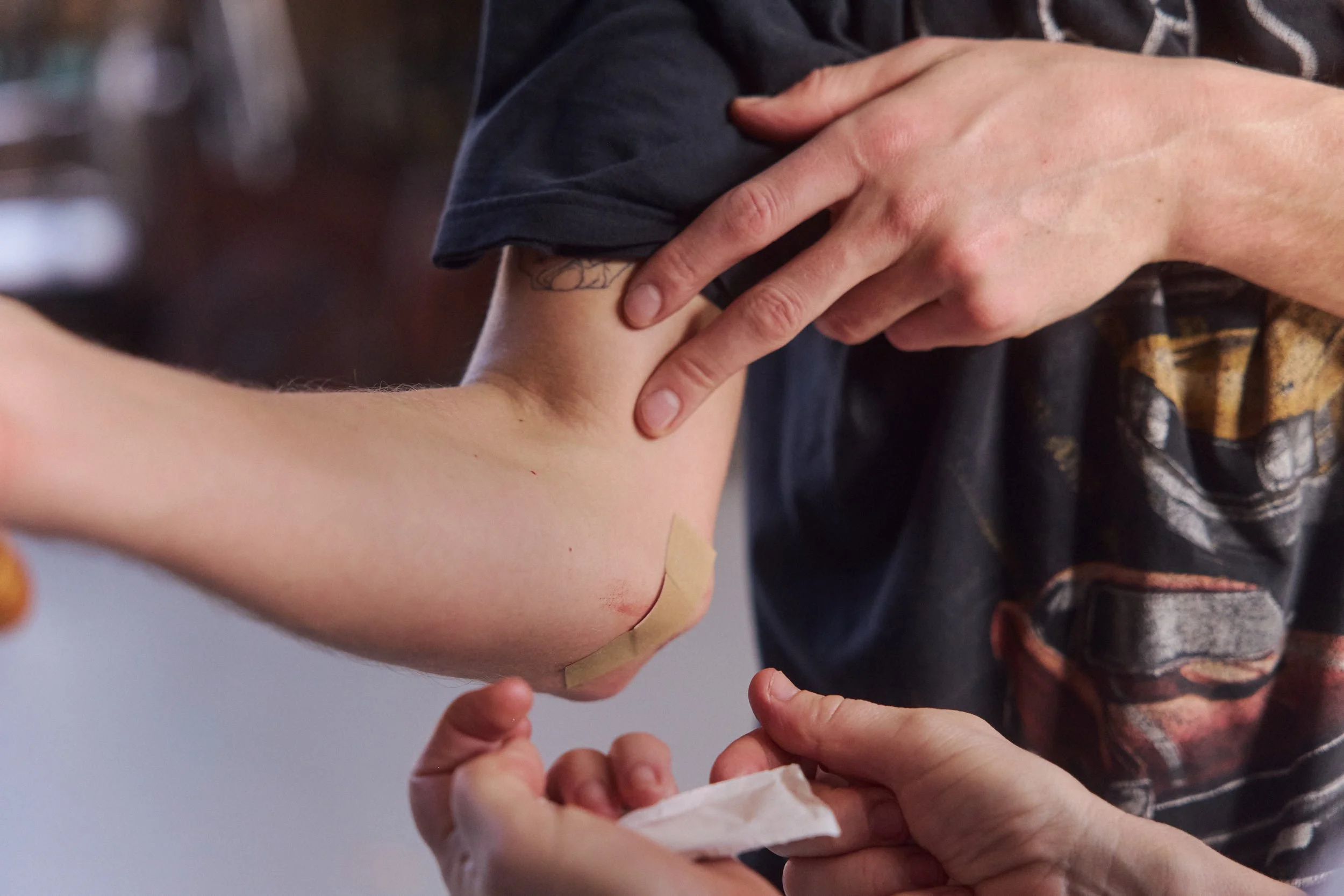
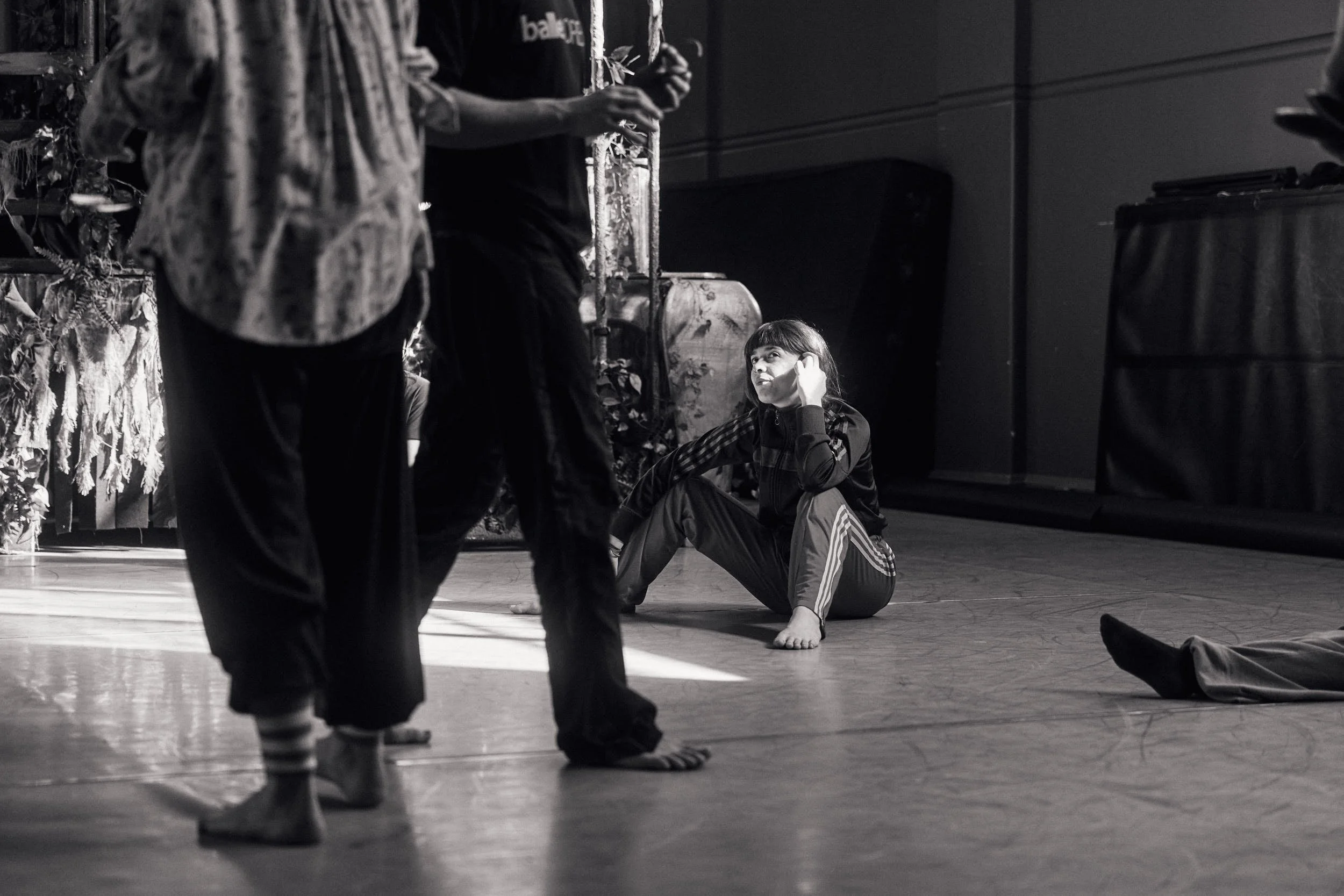
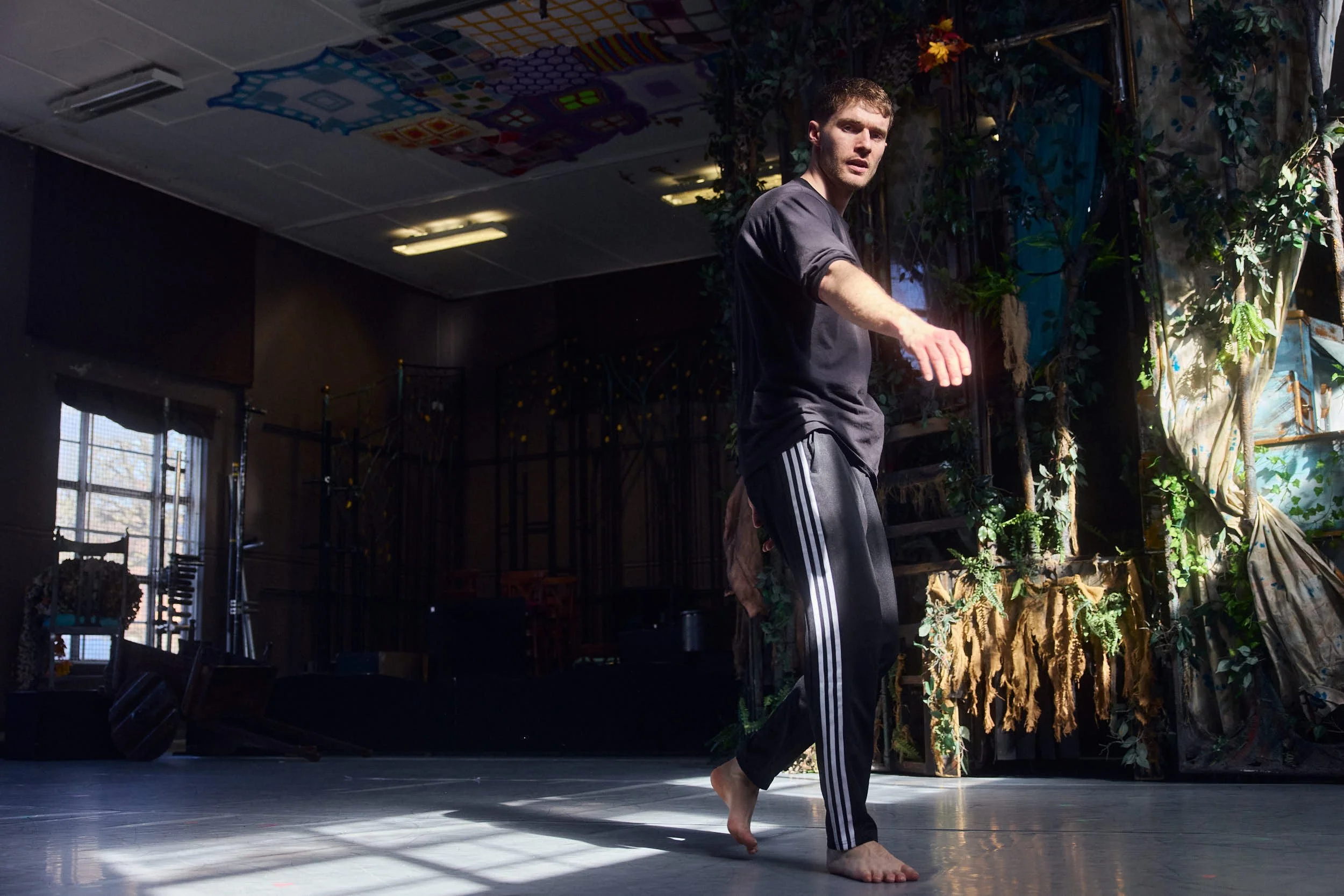

Lorent recalls being in the very earliest days of her career and working with a group of people she’d met while on the dole. If they spent long enough working on something they could get an extra £10 on top of their dole money, and so she put a group together that included some dancers, but also drummers, actors, sportspeople and medics.
It allowed her to produce a work, but drew the ire of a senior figure at the Laban Centre.
“That guy said to me ‘Oh my God, you're mixing dancers with people off the street!’,” Lorent laughs. “He just thought it was awful, like I'd mixed the elite with the rubbish of humanity!”
For Lorent it unlocked the way of working which she’s returned to throughout her career, where the focus was on creating a representative, accessible artistic result.
She gives the example of a production of Rumpelstiltskin, where the youngest cast member was three and the eldest was 74.
Lorent talks about the authenticity of that as an asset, rather than a problem to be worked around, and how it can bring freshness to the performance and an invigorating creative challenge for Lorent as choreographer and director.
It also helps to make the work more accessible, something which both Aisha and Toby mention when I speak to them.
“I am who I am and I think when Liv hires you, almost like your dancing - it’s not secondary, but it's a part of who you are,” Aisha says. “Who you are is what people can see on stage and she can tell if you are somebody that cares about art for people.”
“I love the idea that we play to audiences which may have only been to the theater a few times or don't know about contemporary dance,” Toby says.
“It's high art, but it's accessible art,” he continues, “and it makes you think and hopefully feel and all those kinds of things.”
Throwing open the casting, and using community casts on a regular basis, also opens up more opportunities to get involved in dance.
balletLorent makes a conscious effort to work with local primary schools, and to host workshops run by the same dancers you’d see if you came to one of the company’s performances.
“When we visit primary schools and do a workshop, some kids thrive at it,” Liv says, “and it’s normally the ones who aren't good at everything else to be honest. The really fidgety, naughty ones who can't sit still.”
There’s power, Lorent says, in being able to tell a teacher, a parent, or the child themselves how good they are at something they wouldn’t have had the chance to try otherwise.
Much of this is informed by Liv’s own experiences of neurodiversity, both her own and her family’s where there is a history of Tourette’s syndrome, ADHD, OCD and dyspraxia.
balletLorent run or play host to a number of programmes aimed at reaching deprived communities in and around their base in Scotswood and Benwell.
That includes sessions with young children, some of whom are chaperoned to and from the sessions to help parents juggle work or other caring commitments.
For slightly older children, there’s a focus on creativity.
“I really find it very, very inspiring working with this, very, very different group of children and teenagers,” Liv says. “We've got a group of teenagers who are encouraged to just find ways of being creative in their own way. They’re learning how to do it with what's in the room, making use of what they have.”
There are also pop-up performances, including Christmas shows aimed at children who would be unlikely to ever attend a dance theatre performance at the Theatre Royal or the Northern Stage.
“When we visit primary schools and do a workshop, some kids thrive at it… and it’s normally the ones who aren't good at everything else to be honest. The really fidgety, naughty ones who can't sit still.”

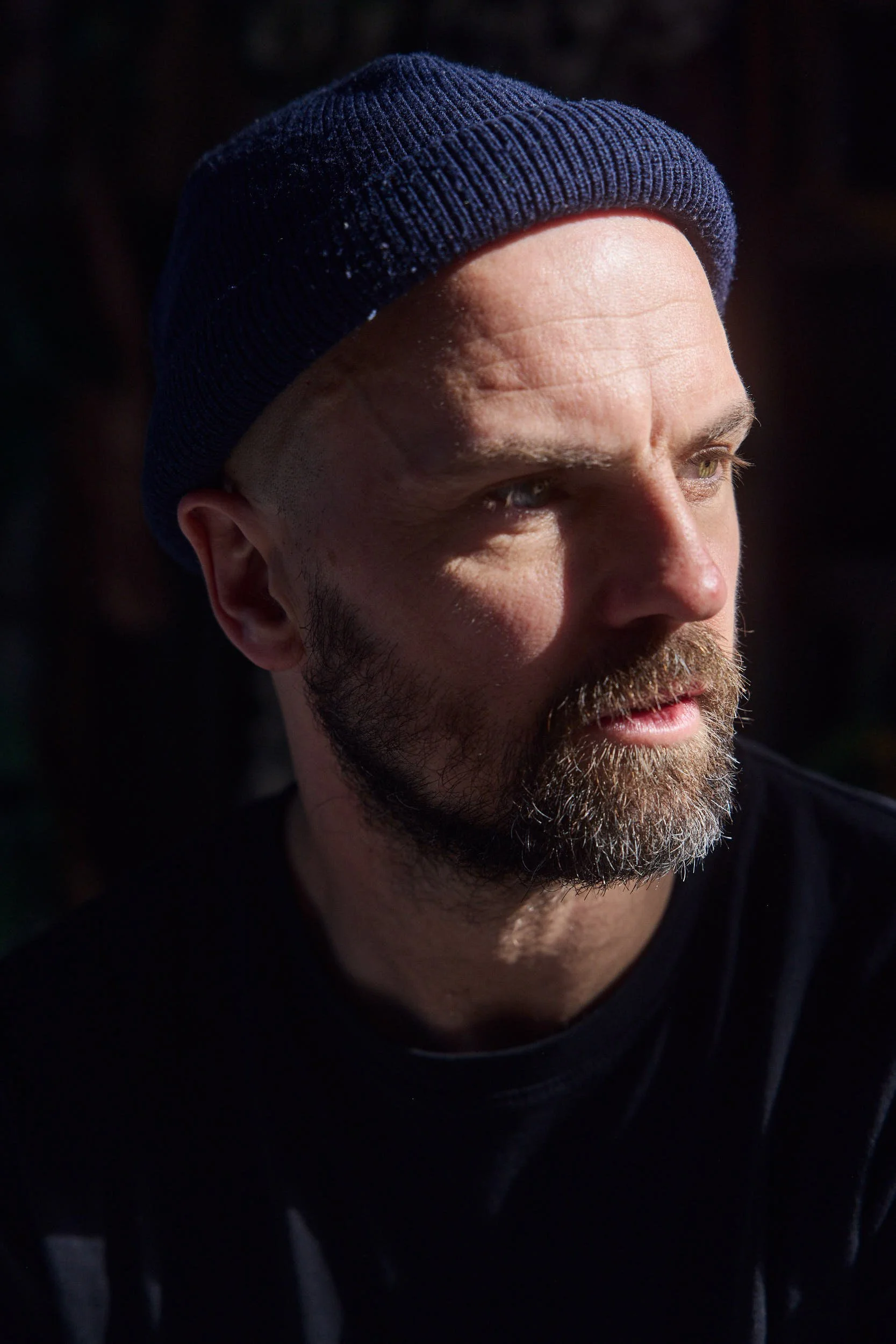
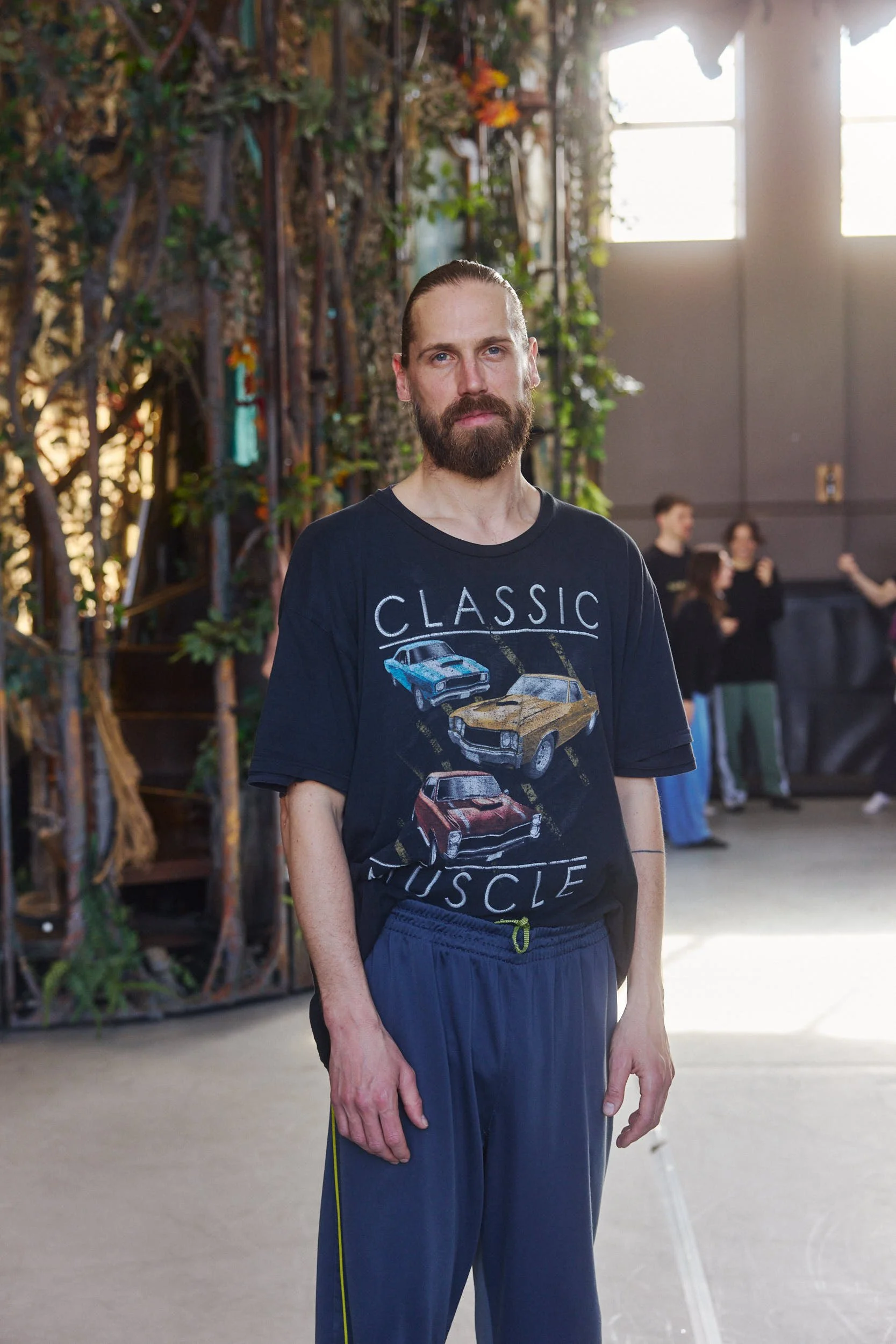


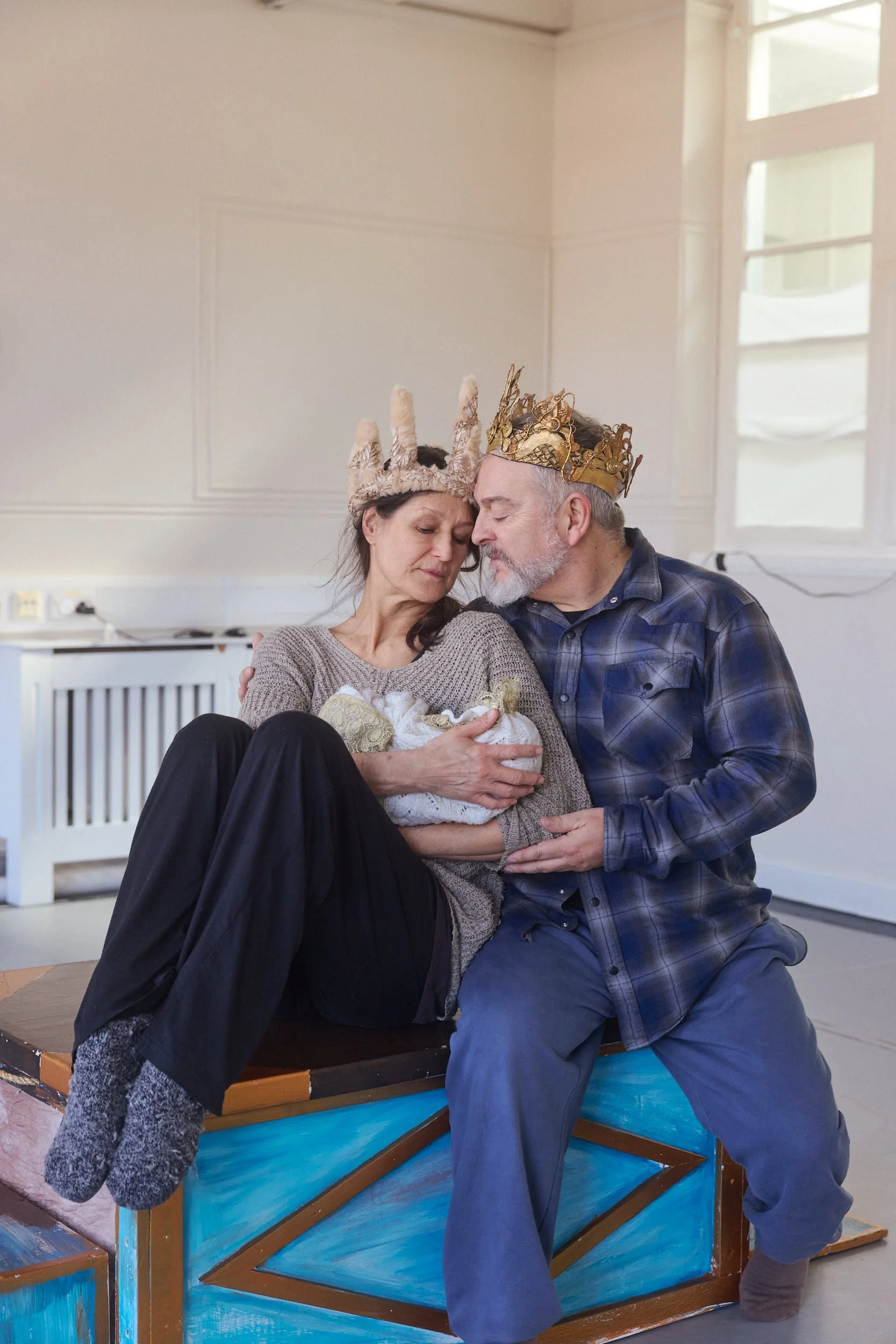
balletLorent is a registered charity, relying on funding from the Art Council as a National Portfolio Organisation, as well as support from other funders. Lorent is proud that these organisations support the company in reaching deprived communities, and in positioning dance and creativity as vital not just to physical health but mental health as well.
There’s a precarious nature to running an artistic organisation, but Liv Lorent’s track record is impressive, as is her dedication to her approach and the joy she finds in experimentation.
“I love being in the North East,” she says, “because I've just been under the radar a bit. I think that’s of a lot of value actually artistically, to not be under the microscope. In some ways you don't get the attention you deserve, but also people aren't getting in your way.”
The North East audiences sniff out inauthenticity, she says, and care about whether the work is good and interesting, and not much else matters. balletLorent premieres every new work in the North East before touring it around the country.
“Even though I'm not from the North East,” Lorent says, “it's the right place for me to be, and I feel it's the right audience for me to shape a work. Because once you shape a work here, you can take it anywhere. So, we make the work here and then we go to London.”
“I love that people in the North East have got jobs in the arts because we exist,” she says.
With their base at the John Marley Centre, they now have roots in the west end of Newcastle, and have welcomed thousands of people through their doors for performances and community-focused sessions.
Lorent talks about survival being the main aim for balletLorent, as it is for many organisations in the arts, but with the history, stability and plans for the future, there should be a long and successful path ahead of them - and one which benefits the people of the North East.
Learn More






